The idea of a self-seeding wildflower bed is simple: plant pretty seeds once and watch them return year after year with nothing more than a little watering during the hot season. However, establishing wildflower beds can be tricky when you live in an area with unpredictable Spring temperatures, sporadic rain or pest problems. On the Wild Rose homestead, we've worked around these challenges with a fool-proof method that also uses excess packaging in the process!
Traditionally, wildflower beds are direct-seeded in the early Spring or Fall. Between variable rains, slugs and birds, we have never had great success with this method. Now, we start our wildflowers in shallow boxes that can be planted directly into the ground once they are large enough to defend themselves against pests.
How to Establish a Successful Wildflower Bed
What you need:
- Seeds
- Shallow Boxes or Seed Trays
- Planting Mix
- Pick Your Seeds: Pick flowers that do well in your area and planting conditions. We like to use a variety of bloom cycles, heights, colors and growth patterns for our beds. My annual flower mix generally contains Chamomile (German and Roman), Flax, Bee's Friend, Cosmos, St John's Wort and an excessive amount of Poppies (all varieties). I like to add in Foxglove, Snapdragon, Yarrow, Echinacea and Hollyhock as perennials/biennials. And of course, Calendula is planted throughout for use in Wild Rose formulas. Several seed mixes for specific growing conditions are available as well.
- Sort Your Seeds: Sort your seeds according to planting time and planting depth. Most of the seeds above are recommended for direct seeding in early Spring or late fall. Some are to be planted on the surface (light dependent germination) and some are planted about 1/4" deep. Create a mix for surface planting and a mix for each planting depth.
- Check Planting Time: If you have the ability to start in a greenhouse, start your seeds as early as 8-10 weeks before the average last frost. We start ours in mid to late February in our unheated greenhouse here in Southern Oregon. Most flowers prefer to germinate in cool soils and can still be planted successfully outside of a greenhouse, but you will need to pick an area that can be kept free of pests. Use the direct-seed/outdoor planting time on the seed packets when planting outside of a greenhouse.
- Prepare Your Trays: Choose shallow boxes with a depth of 2"-3" or cut down a tall box that will fit inside your seed tray. We're lucky that our 4oz glass jar boxes fit almost perfectly inside a standard seedling tray. Check grocery stores for cardboard produce trays and bakeries for shallow boxes. If you cannot find boxes that fit, you can also plant directly into the seedling tray, but this will make transplanting more difficult. The boxes themselves will hold together well enough to plop into the ground at transplant time, but we highly recommend setting the boxes inside a plastic seedling tray for easy transport.
- Fill Trays with Seed Planting Mix: If you're just planting a few trays, pickup some seed planting mix from your local garden store. We like to make our own seed starting mix for all of our plantings. If you are planting seeds that require a planting depth below the surface, leave at least 1/2" of space below the top of your box/planting tray when filling with planting mix. Pat down lightly with your hands.
- Sprinkle, Sprinkle: Start with your seed mix requiring the deepest planting depth. For me, that's generally 1/4" deep. Sprinkle a pinch of seed over your box. Use less seed if you are planting another seed-depth mix in the same box. Cover seeds with enough dirt to get to your next planting depth. because I usually only use two seed depth mixes, I add 1/4" of dirt at this point and pat down securely. Repeat for all seed depth mixes.
- Take Care: Care for your seeds according to packet instructions. Always keep them moist and preferably in the sun. Most flowers germinate quickly and you should start to see sprouts in about a week. If you are planing very early, germination may take a bit longer.
- Transplant: When seedling are strong-looking and lots of roots begin to break through the bottom of the box/tray, it's time to transplant. If you started your seeds in a greenhouse, be sure to harden off before transplanting. Also, you might want to wait for good weather or lower pest populations if these are a challenge in your area. If you planted in a box, planting is simple: dig a shallow hole the same size as the box, plop the box in the hole, and replace dirt around edges. You can also split up the box into clumps to spread out the wildflowers (they will eventually fill the gaps). The cardboard should already be decomposing and will break down entirely in the following weeks. If you planted in a tray without a box, you will have to gently dig up a clump of seedling from the tray and transplant quickly to minimize root damage.
- Watch 'em Grow: Using this method, you are heavily seeding a small area of dirt. There will be some competition for growth, but you will have a thick, lush wildflower garden in the end. If you choose varieties that reseed easily or are perennials, your flowers will return every year! Even though we struggle with direct seeding at the homestead, it seems like once our flowers are established they reseed with ease.
California Poppy seedlings emerging. Originally planted three years ago, they now easily reseed.

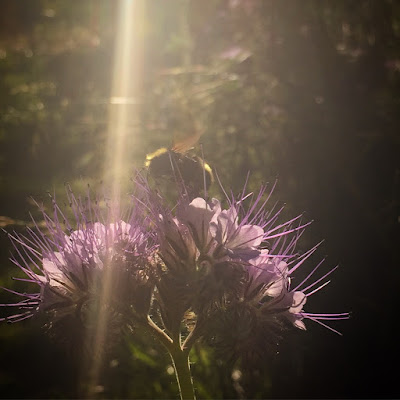
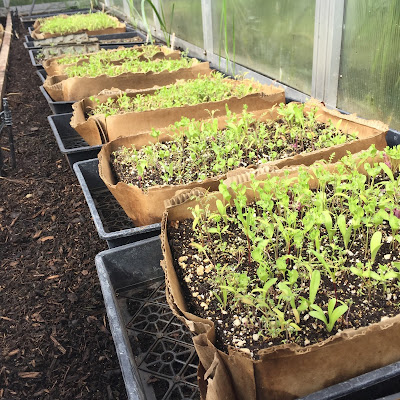
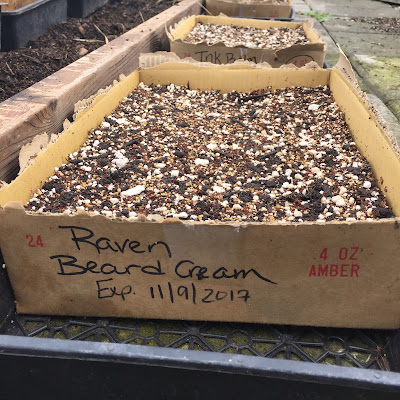
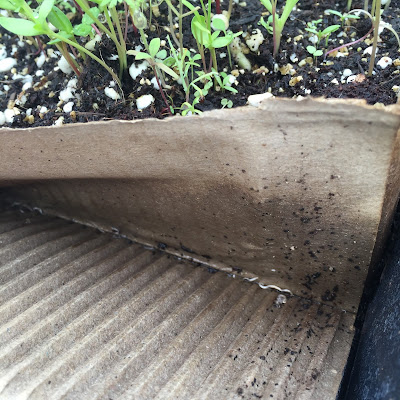

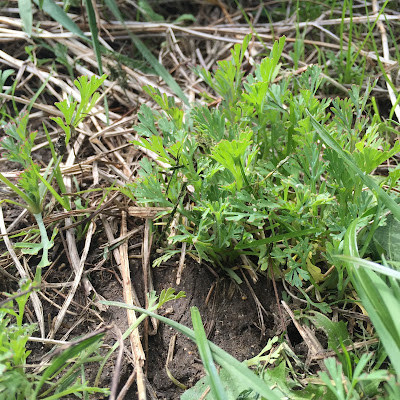


Leave a comment